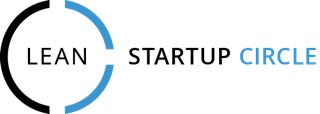Organization:The Lean Startup Movement
Contents
Overview
The Lean Start Up Movement (LSM) is a paradigm shift in product and business development that was introduced by Steve Blank and further popularized by Eric Ries, the author of the bestselling book,The Lean Startup: How Today's Entrepreneurs Use Continuous Innovation to Create Radically Successful Businesses. This concept was initially inspired by the Japanese “lean manufacturing” concepts from the 1980s & 1990s where companies would focus on processes that create value - more specifically, features and services that customers are willing to pay for. By utilizing a scientific approach in which minimal viable products are produced, manufactures were able to bring the product to market quickly and iterate based on the feedback received. This is the core of the lean startup movement: rapid prototyping coupled with extensive analysisofcustomer interactions to pinpoint key values and product-market fit.
The Lean Start Up Movement consists in the most efficient way possible to reduce the risk of failure since it is basically an approach forlaunchingnew products into the market based on hypotheses that must be tested and validated by scientific experimentation. Therefore, testing the products and their vision regularly helps avoid failure.
Purpose
Building off ’s methodology on “customer development," the Lean Startup (LS) Movement has since boiled down to a simple mantra: Build, Measure, Learn. The full lean startup methodology has three key phases. Modeled with the business model canvas in mind, the first step begins with using the canvas to map out and organize business hypotheses. Founders test their theories by bringing minimal viable products to market and use real customer feedback to validate their hunches. Finally, using market insight and agile development methodologies, founders iterate and pivot their way to nirvana (product-market fit). Eric Ries is best known for his contributions to the third and final phase on his approach to agile methodology. The LS framework is one of the first to offer a clear understanding into successful startup development among investors, academics and entrepreneurs.
The LSM favors experimentation over elaborate planning and customer feedabck over intuition. Its goal is to create an institution, not just a product. Furthermore, the LSM guides the manager through the production process to ensure the products are fulfilling customers' needs, are sustainable, and attract early adopters who eventually become the customers when the products are launched.
Distinct Differences From Other Offerings
In the past, all business development concepts were taught in the same dry language-- business plan, expensive product development and aggressive sales. But in the start-up realm, this approach is as effective as speaking French in an English class. The Lean Startup Movement is the rosetta stone to improving the odds of success when developing a start-up business. With the constant experimenting and iterating, founders turn failures into smart pivots that lead to product-market fit - a key metric supporting hypergrowth, steady robust income and future prosperity.
The Lean Startup provides a scientific approach to creating and managing startups and get a desired product to customers' hands faster. The difference between Lean Startup and other movements lies in the fact that this approach eliminated uncertainty, and it lies on the premise of 'Should this product be built?' instead of 'Can this product be built?'.
Impact Achieved For Students and Campus
The Lean Startup Movement is the supporting philosophy of several launch pads, accelerators and incubators found on campuses around the country. Steve Blank has strong academic ties with both Standford and UC Berkeley. Having created the Lean Launchpad, Blank's example has spread to other prominent start-up hotspots such as Launchpad Central and NYU's Summer Launchpad.
Steps Required To Bring Resource to Campus
Several prominent companies like Intuit and Dropbox have begun to publicly employ the Lean Startup ideas. These principles are also taught in classes at Harvard Business School and are implemented in municipal governments through Code for America.
Bringing the Lean Startup Movement to your campus is as easy as going to watch Steve Blank’sfree lesson on Udacity How To Build a Startup, where he breaks down the key tools and steps to build a successful start-up (or at least reduce the risk of failure). Upon learning the basics and understanding the Lean Launchpad offering, students can replicate the framework on their own campus.
Students can also attend the annual Lean Startup Conference in San Francisco with Eric Ries in attendance there.
Contact Information
- How to Build a Startup Udacity Course link: [1]
- Website: https://leanstartup.co/
- Lean Startup Conference:
Twitter: @leanstartup
Email: info@leanstartup.co
Blog: Startup Lessons Learned


